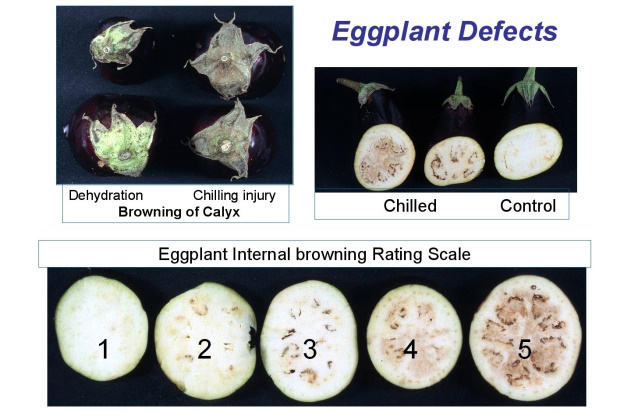Optimized Eggplant Storage
Product Type: Vegetables – eggplant
Stage: Handling & Storage
Problem: Damage and spoilage of eggplants in storage
Solution: Avoid chilling and freezing injury to eggplant and understand different optimum temperatures by eggplant types
- Eggplant is harvested before full maturation as they become pithy and bitter as they progress beyond maturity.
- There are multiple eggplant varieties which each have their own optimal temperature ranges, including: American, Chinese, Japanese, mini-Japanese, and white eggplant varieties.
- Eggplant is typically stored less than 14 days as their visual condition rapidly decays. Chilling injury occurs within 6-8 days if kept outside of optimal temperature by type. Injury results in pitting, surface bronzing, and browning of seeds and pulp tissue. Chilling injury is cumulative and can also occur prior to harvest. Days to visible chilling injury by type:


- Freezing injury occurs at temperature below -0.8 Celsius. Chilling stress increases the chance of disease which exacerbates
postharvest loss. Rapid cooling prevents water loss and reduces the chance of chilling injury. Injury and water loss can be reduced by storing eggplant in polyethylene bags of polymeric film overwraps. Botrytis is a potential risk of this wrapping practice. Chilling injuries are shown below:
